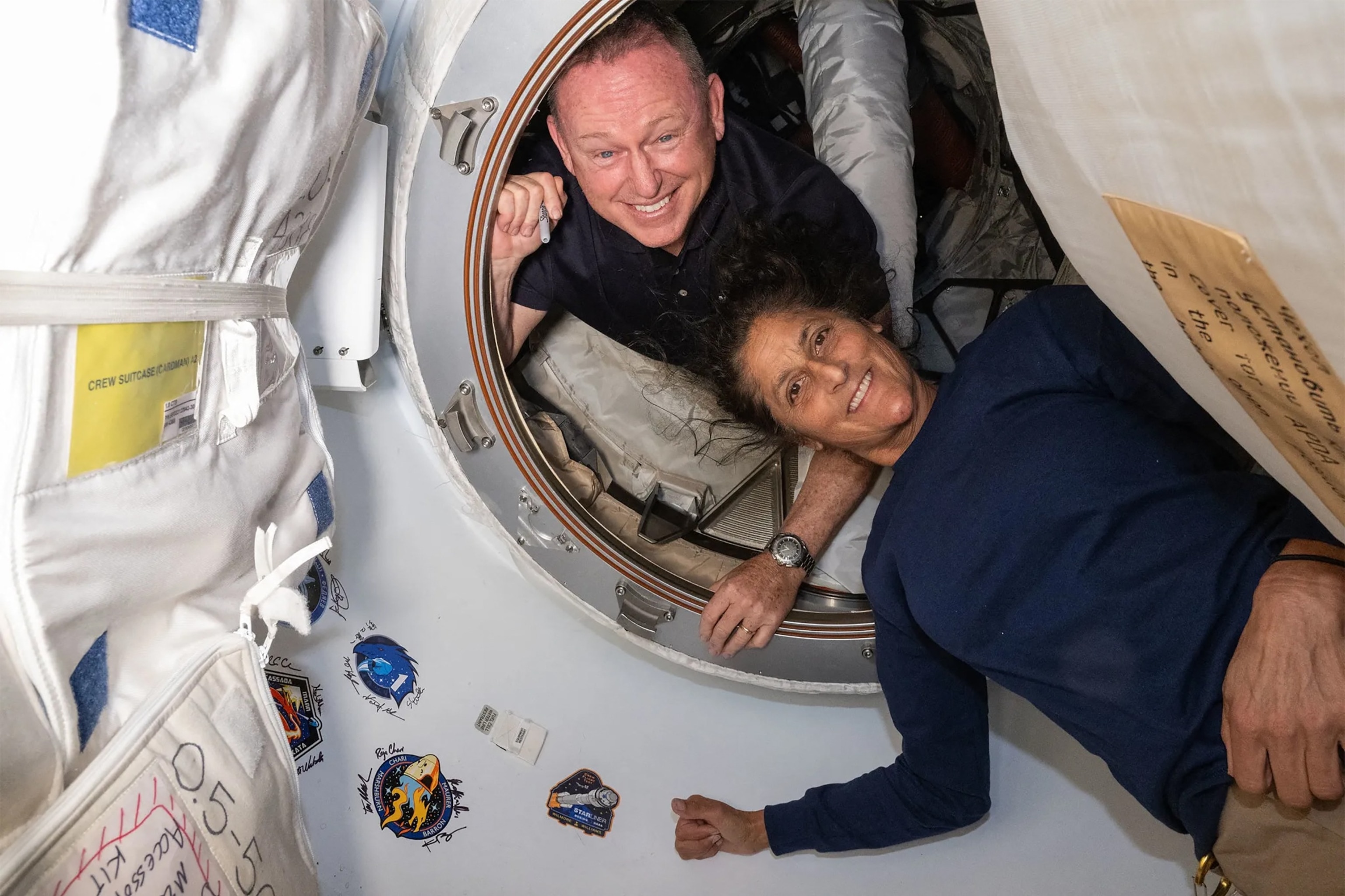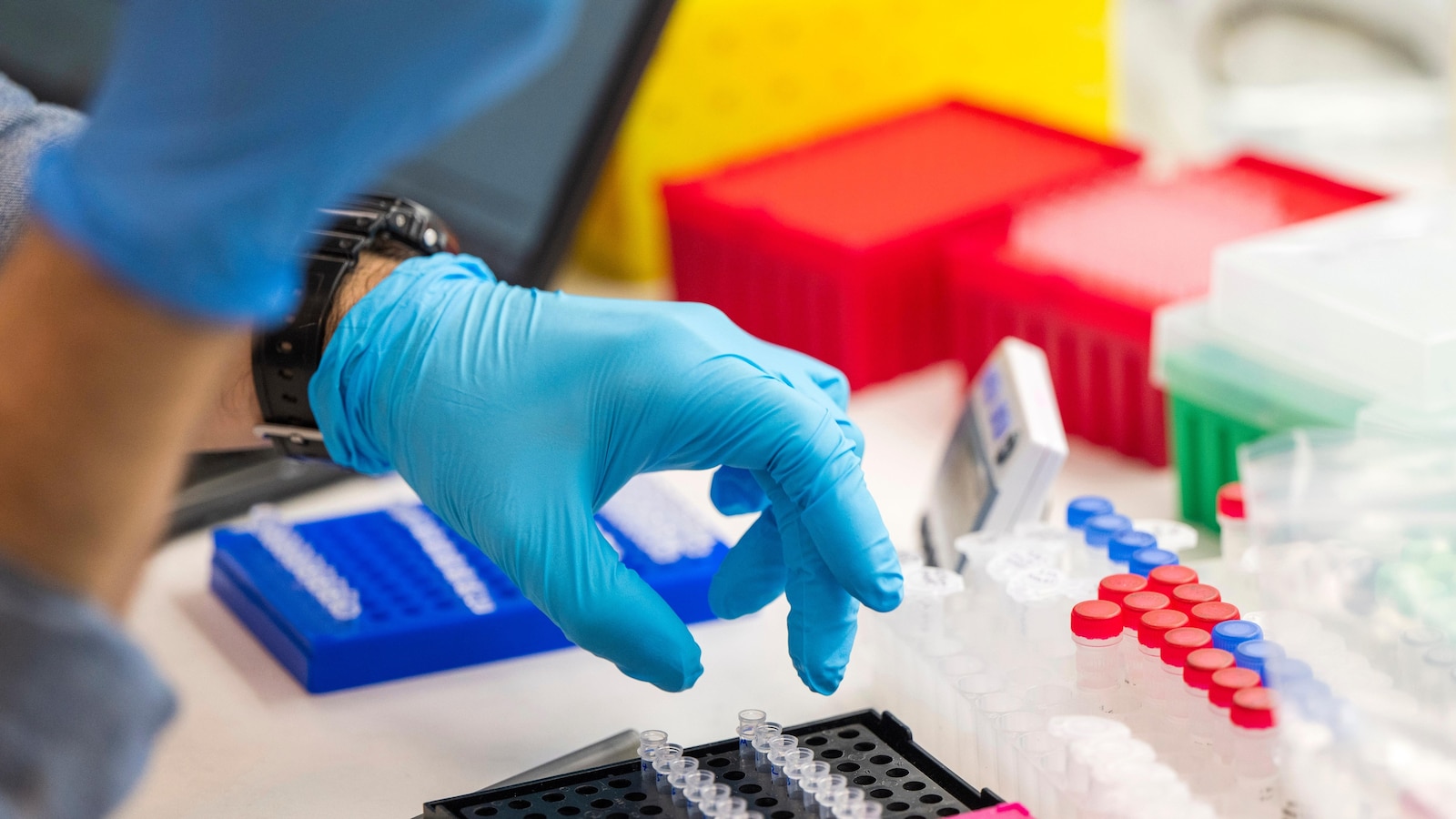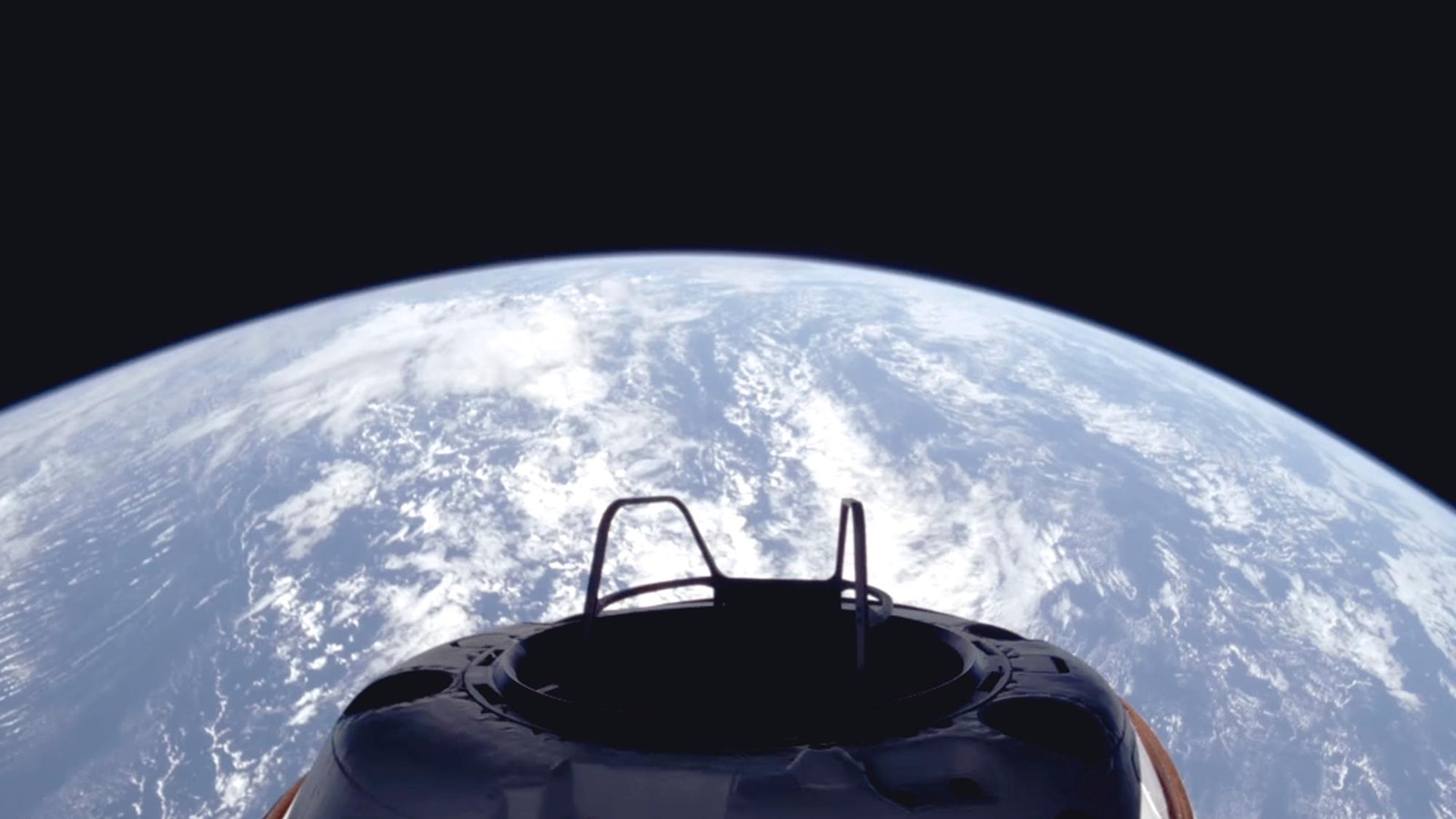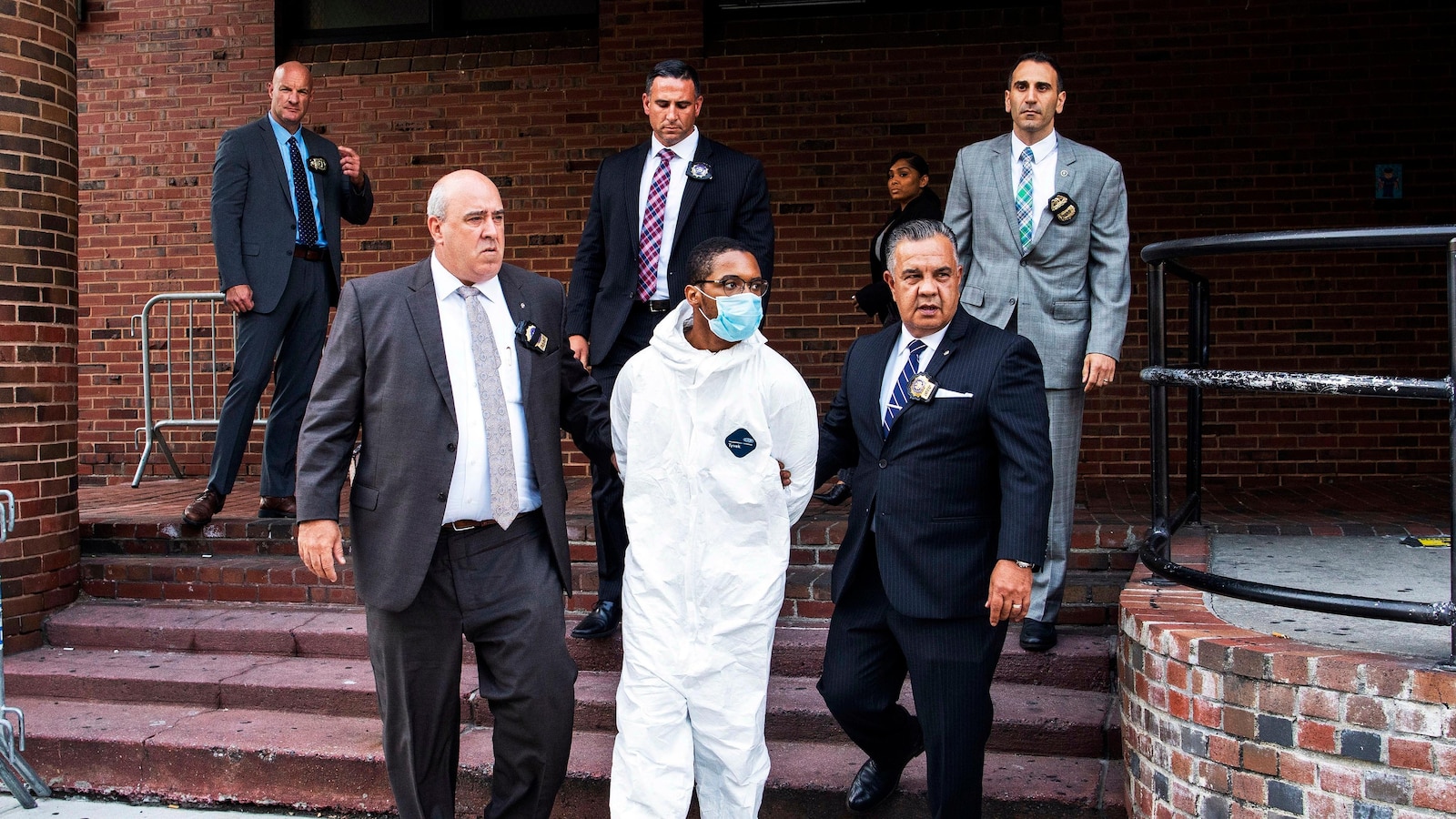The two astronauts who went up to the International Space Station (ISS) on Boeing’s Starliner will have to come home on a different spacecraft, NASA officials announced Saturday.
Astronauts Barry “Butch” Wilmore and Sunita “Suni” Williams, who performed the first crewed test flight of Starliner, will return in February 2025 on the Space-X crew 9, according to NASA.
The Boeing Starliner will return in a separate flight uncrewed, NASA said.

This undated handout picture from Nasa released on July 2, 2024 shows NASA’s Boeing Crew Flight Test astronauts (from top) Butch Wilmore and Suni Williams inside the vestibule between the forward port on the International Space Station’s Harmony module and Boeing’s Starliner spacecraft.
Handout/NASA/AFP via Getty Images
“The decision to keep Butch and Suni aboard the International Space Station and bring the Boeing Starliner home uncrewed is a result of a commitment to safety,” NASA administrator Bill Nelson said at a news conference.
When Wilmore and Williams launched on June 5, they were originally scheduled to only be on the ISS for a week and return on June 14, but have since had their return delayed multiple times.
While the pair integrated with the “Expedition 71” crew aboard the ISS, assisting them with research and other responsibilities, NASA officials have said Wilmore and Williams are using up more supplies meant for the ISS crew.
Steve Stich, program manager for NASA’s Commercial Crew Program, said that NASA teams spent all summer looking over the data on Starliner and felt there was too much risk with regards to the vehicle’s thrusters.
“There was too much risk for the crew,” he said.
A Boeing spokesperson said in a statement that the company “Boeing continues to focus, first and foremost, on the safety of the crew and spacecraft.”
“We are executing the mission as determined by NASA, and we are preparing the spacecraft for a safe and successful uncrewed return,” Boeing said.
NASA officials said Wilmore and Williams will assist with science experiments, maintenance and maybe some spacewalks during their extended stay on the ISS.
Stich said during a news conference earlier this month that NASA was considering sending SpaceX’s Dragon Crew-9, set to launch to the ISS in September, with only two of the four astronauts assigned to it.
The spacecraft would carry extra spacesuits for Wilmore and Williams. However, the two would remain on the ISS until February 2025, when Crew-9 is set to return to Earth. Stich said at the time that the proposed plan had not formally been approved yet.
Stich added that Starliner does not currently have the ability to autonomously undock from the ISS. To do that, the Starliner software would need to be updated and the Boeing flight control team would need to undergo additional training.
Starliner is part of the larger Commercial Crew Program at NASA, which was testing if Boeing’s spacecrafts could be certified to perform routine missions to and from the ISS.
Starliner has been plagued by issues even before launch. The flight test was originally tentatively scheduled for May 6, but was scrubbed after a problem with an oxygen valve on a rocket from United Launch Alliance (ULA), which manufactures and operates the rockets that launch spacecraft into orbit.
A new launch date had been set for May 25, but a small helium leak was discovered in the service module, which contains support systems and instruments for operating a spacecraft.
Helium leaks and a thruster issue then threatened to delay Starliner’s docking. Five days after docking at the ISS, NASA and Boeing said the spacecraft was experiencing five “small” helium leaks and, at the time, said enough helium was available for the return mission.
Last month, teams at NASA’s White Sands Test Facility in New Mexico performed ground tests of Starliner’s thruster, putting it through similar conditions the spacecraft experienced on its way to the ISS, to see how it would react upon undocking.
Boeing’s Starliner astronauts are set to return to Earth in February, but in a unique twist, they will be coming back on separate spacecraft, according to NASA. This decision comes after Boeing’s Starliner spacecraft encountered technical issues during its test flight to the International Space Station (ISS) in December.
The two astronauts, NASA’s Mike Fincke and Nicole Mann, along with Boeing’s Chris Ferguson, were originally scheduled to return to Earth on the same spacecraft. However, due to the technical issues that occurred during the test flight, NASA and Boeing have decided to have Fincke and Mann return on a Russian Soyuz spacecraft, while Ferguson will remain on the ISS until a future mission can bring him back to Earth.
This decision was made in order to ensure the safety of the astronauts and to avoid any potential risks associated with using the Starliner spacecraft for their return trip. NASA and Boeing are currently working together to investigate the technical issues that occurred during the test flight and to address any concerns before the spacecraft is used for future missions.
Despite the setback, NASA remains confident in Boeing’s ability to safely transport astronauts to and from the ISS. The Starliner spacecraft is part of NASA’s Commercial Crew Program, which aims to provide safe and reliable transportation for astronauts to the ISS using commercial spacecraft developed by private companies like Boeing and SpaceX.
The return of the Starliner astronauts on separate spacecraft highlights the importance of safety in space travel and the need for thorough testing and evaluation of spacecraft before they are used for crewed missions. NASA and Boeing are committed to ensuring the safety of all astronauts who travel to and from the ISS, and will continue to work together to address any issues that may arise during future missions.
Overall, the return of the Starliner astronauts on separate spacecraft in February serves as a reminder of the challenges and complexities of space travel, and the importance of prioritizing safety above all else. NASA and Boeing are dedicated to learning from this experience and improving their processes to ensure the success of future crewed missions to the ISS and beyond.



